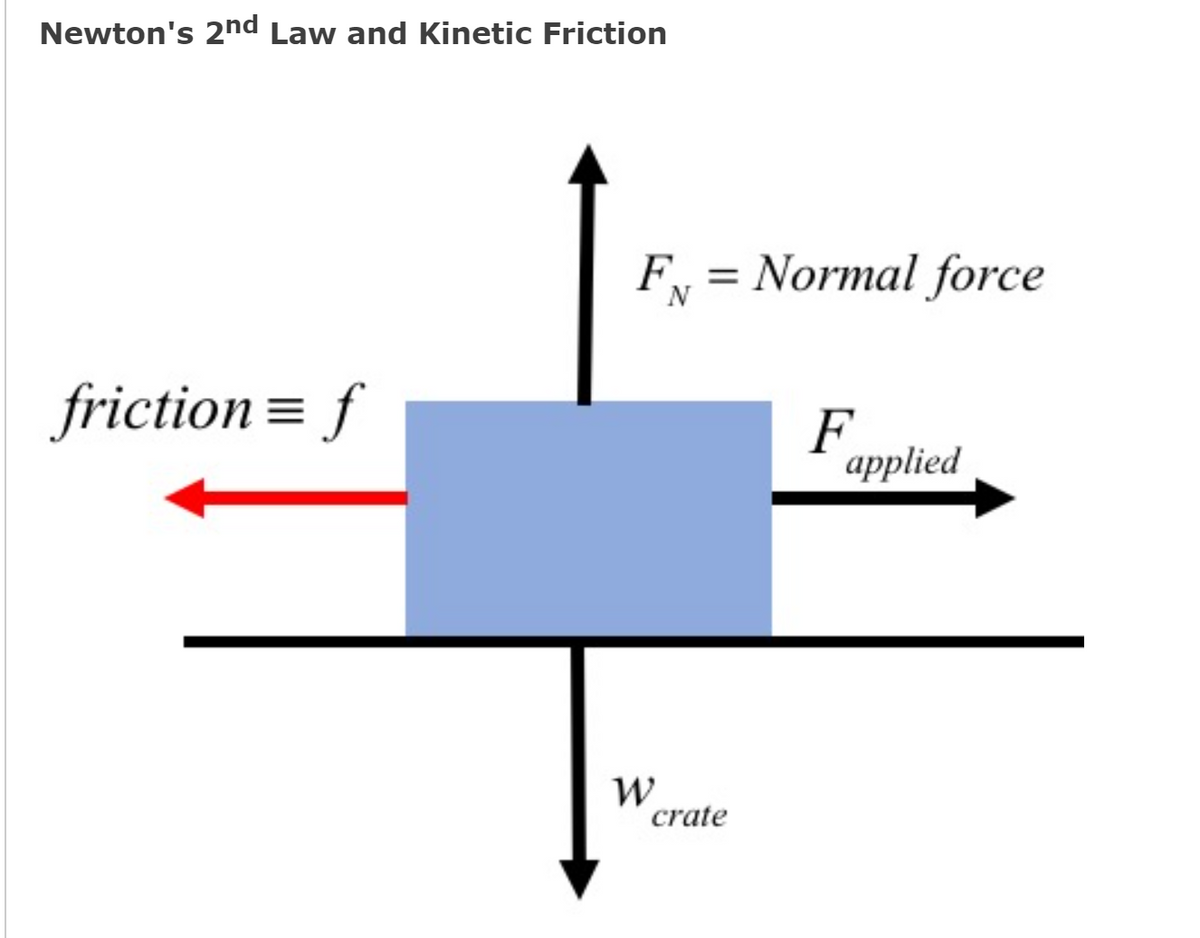crate that has a mass m = 16 kg (equivalent to a weight of w = mg = 160 N, where g = 10 m/s2 in this case) is located on a rough surface. When a force Fapplied = 45 N is exerted on the crate the crate moves to the right with increasing speed. This implies that the crate is now accelerating and the net force on the crate is no longer zero. The net force acting on the crate in the horizontal direction can be found by
Picture attached
A crate that has a mass m = 16 kg (equivalent to a weight of w = mg = 160 N, where g = 10 m/s2 in this case) is located on a rough surface. When a force Fapplied = 45 N is exerted on the crate the crate moves to the right with increasing speed. This implies that the crate is now accelerating and the net force on the crate is no longer zero. The net force acting on the crate in the horizontal direction can be found by adding up the forces in the horizontal direction. Keeping in mind that forces that act to the right are positive (Fapplied) and forces that act to the left are negative (f = friction), it is possible to solve for the net force = Σ F.
ΣF = Fapplied - f
Once the net force, ΣF is known, Newton's 2nd Law can be applied to solve for the acceleration, a
a =
| ΣF |
| m |
(a) When the frictional force acting on the crate is equal to 0 N, what is the acceleration of the crate? a = ______ m/s2
(b) When the frictional force acting on the crate is equal to 2.25 N, what is the acceleration of the crate? a = ______ m/s2
(c) When the frictional force acting on the crate is equal to 4.5 N, what is the acceleration of the crate? a = ______ m/s2
(d) When the frictional force acting on the crate is equal to 9 N, what is the acceleration of the crate? a = ______ m/s2
(e) When the frictional force acting on the crate is equal to 22.5 N, what is the acceleration of the crate? a = ______ m/s2
(f) Examine your results above. While the applied force is kept constant and the frictional force increases, the acceleration on the crate: decreases
(g) In order to have zero acceleration and thus a net force = Σ F = 0, the frictional force must be equal to: f - 45 N

Trending now
This is a popular solution!
Step by step
Solved in 2 steps




